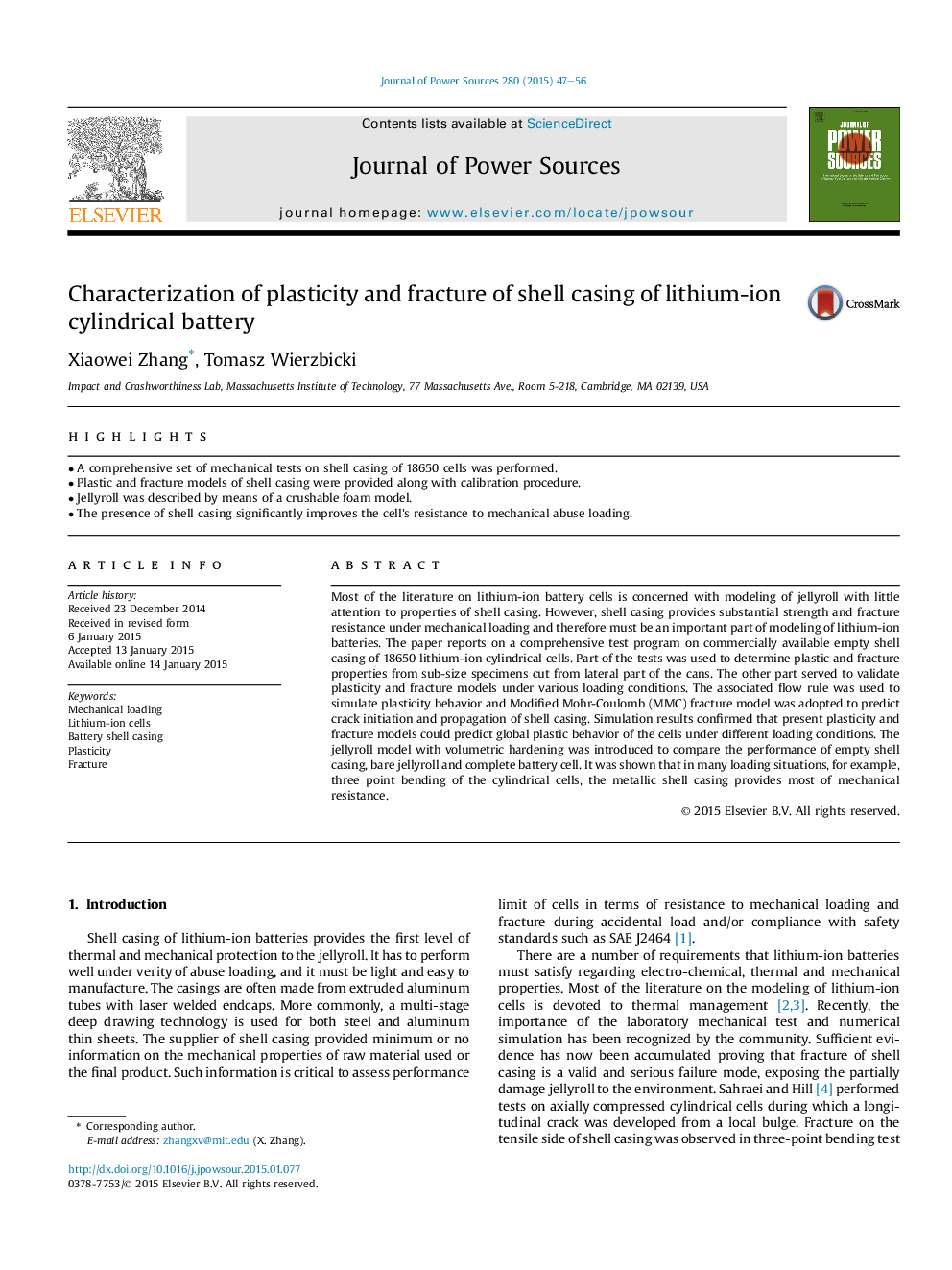| Article ID | Journal | Published Year | Pages | File Type |
|---|---|---|---|---|
| 7733629 | Journal of Power Sources | 2015 | 10 Pages |
Abstract
Most of the literature on lithium-ion battery cells is concerned with modeling of jellyroll with little attention to properties of shell casing. However, shell casing provides substantial strength and fracture resistance under mechanical loading and therefore must be an important part of modeling of lithium-ion batteries. The paper reports on a comprehensive test program on commercially available empty shell casing of 18650 lithium-ion cylindrical cells. Part of the tests was used to determine plastic and fracture properties from sub-size specimens cut from lateral part of the cans. The other part served to validate plasticity and fracture models under various loading conditions. The associated flow rule was used to simulate plasticity behavior and Modified Mohr-Coulomb (MMC) fracture model was adopted to predict crack initiation and propagation of shell casing. Simulation results confirmed that present plasticity and fracture models could predict global plastic behavior of the cells under different loading conditions. The jellyroll model with volumetric hardening was introduced to compare the performance of empty shell casing, bare jellyroll and complete battery cell. It was shown that in many loading situations, for example, three point bending of the cylindrical cells, the metallic shell casing provides most of mechanical resistance.
Related Topics
Physical Sciences and Engineering
Chemistry
Electrochemistry
Authors
Xiaowei Zhang, Tomasz Wierzbicki,
